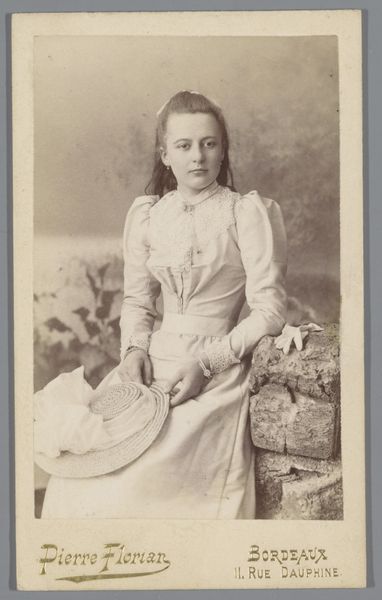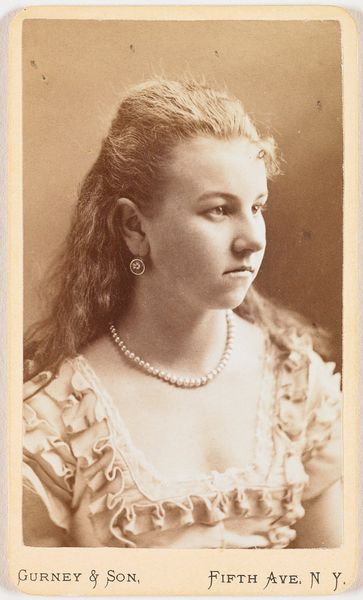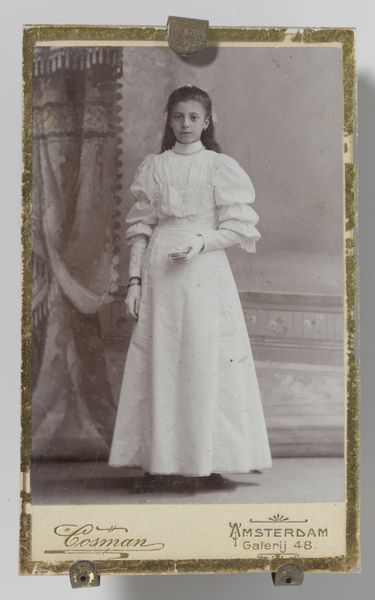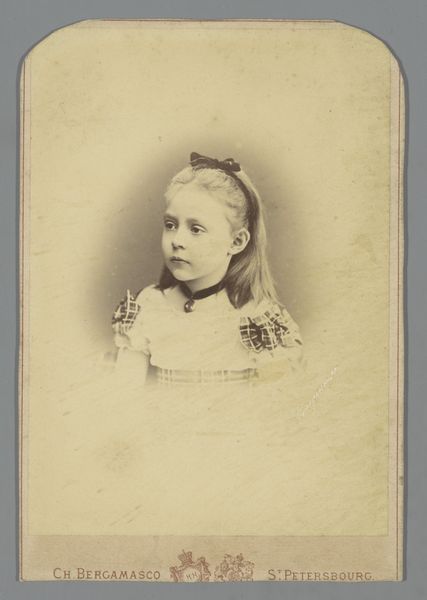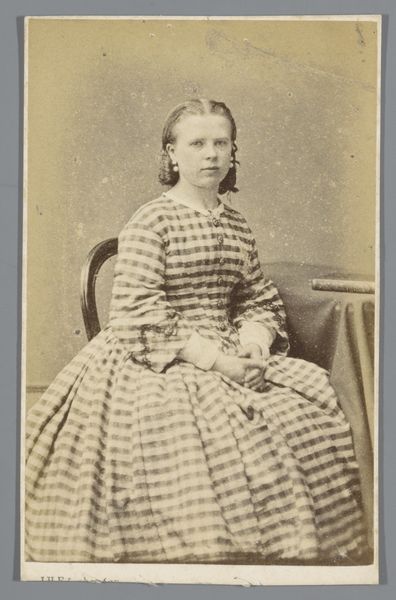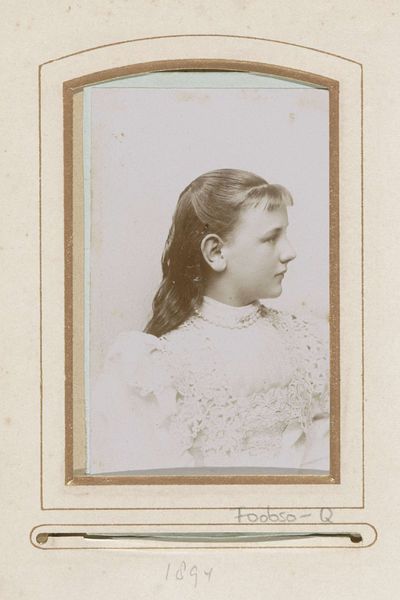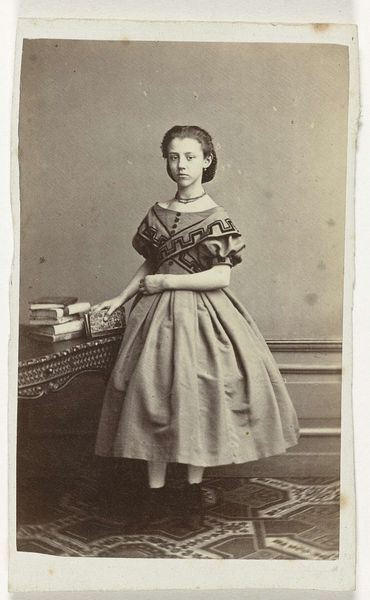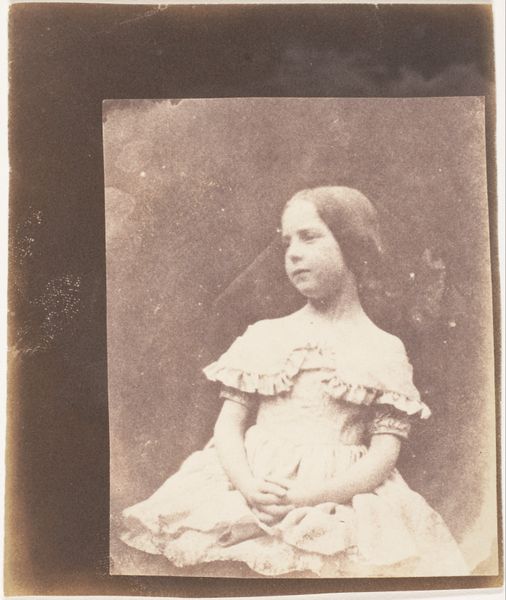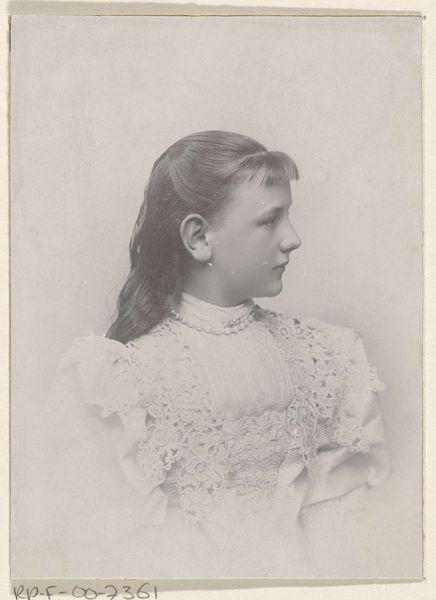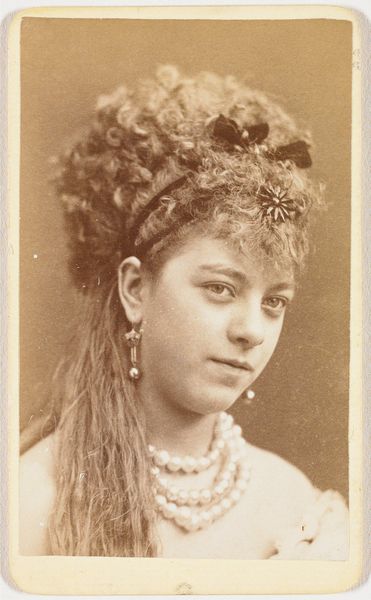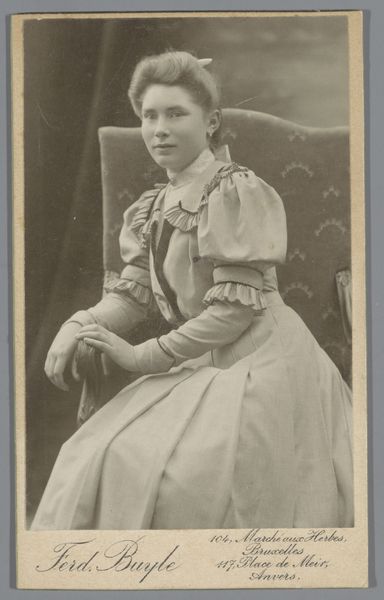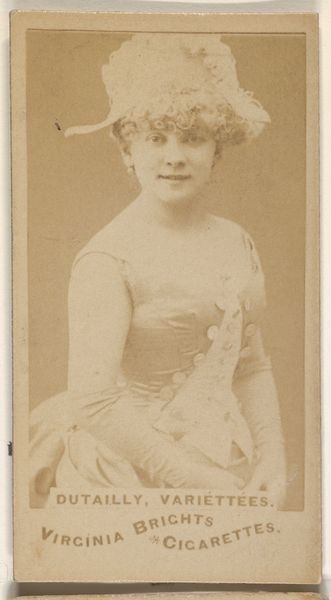
photography, albumen-print
#
portrait
#
photography
#
albumen-print
Dimensions: 3 3/4 x 2 1/4 in. (9.53 x 5.72 cm) (image)4 3/16 x 2 7/16 in. (10.64 x 6.19 cm) (mount)
Copyright: Public Domain
Editor: Here we have an albumen print photograph entitled "Annie Elsler" taken sometime between 1869 and 1874 by Jeremiah Gurney. It feels quite posed and formal, but I wonder, what can you tell me about it? Curator: This portrait provides us with a glimpse into the visual culture of the late 19th century. Photography studios like Gurney’s, located on Fifth Avenue in New York, became social institutions, shaping perceptions of beauty, status, and identity. Notice how Annie Elsler is positioned; how might this relate to the power dynamics of portraiture at the time? Editor: I guess the photographer had all the power? She’s sitting formally and it feels a bit staged. The flowers don't look too realistic. Curator: Precisely! This staged quality reflects the commercial aspect of photography, where studios like Gurney & Son mass-produced idealized representations. Furthermore, Annie's attire and adornments—her elaborate dress, pearls, and earrings—speak to a certain socio-economic positioning, doesn't it? It’s more than just an image; it's a constructed performance for the camera and for public consumption. It makes you wonder who got their picture taken. Who got remembered in the long-run? Editor: That's true; the material objects on display in the picture send a very clear message. Are you saying that photography at the time mostly served the wealthier part of the population? Curator: The professional portrait industry certainly catered to that class. But even as photography became more accessible to other social classes over time, portraiture continues to function as a symbol of commemoration and remembrance, as well as aspiration and social capital. What about her direct gaze toward the camera? How do you interpret that? Editor: Her gaze is… intriguing. I think there's a vulnerability to it that is interesting. She looks human and a bit distant. Curator: That may come from an agreement to act "natural" that, like any artifice, could fall away or ring false to modern viewers. In many ways this is why such a seemingly simple portrait photograph can provoke a modern sense of pathos. Editor: This really highlighted how portraiture functions as a form of cultural performance, reflecting and reinforcing existing social hierarchies and aspirations. It makes you think about all the forces at work behind the camera.
Comments
No comments
Be the first to comment and join the conversation on the ultimate creative platform.
